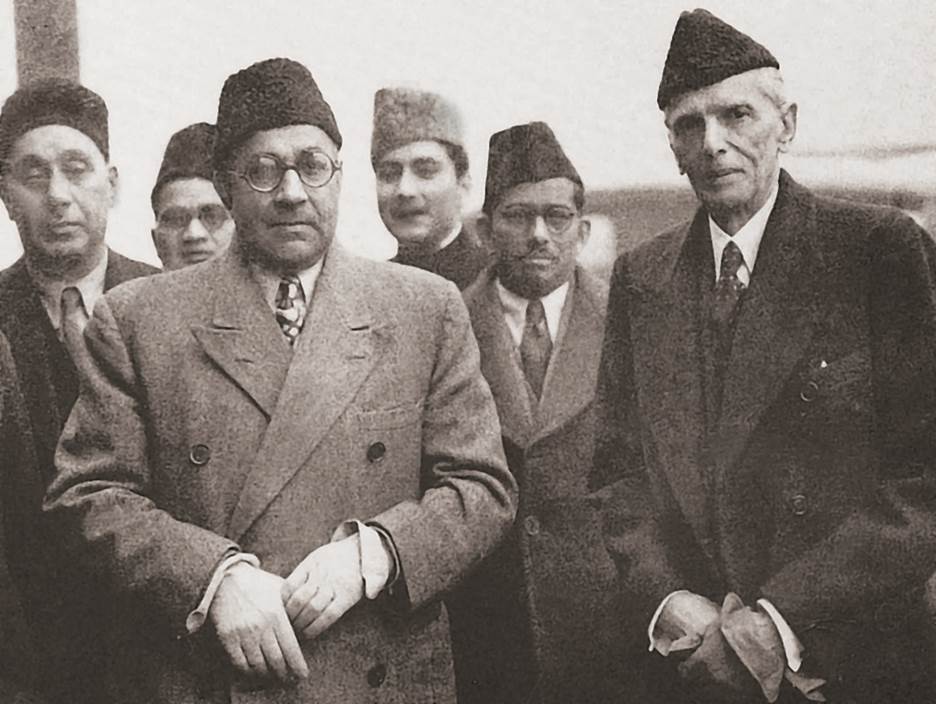Tradition, Reform and Modernism in the Emergence of Pakistan - 6
By Professor Nazeer Ahmed
Concord, CA

The failure of the Simla Conference was a triumph for Jinnah’s strategy. It demonstrated to the Unionists that in the political end game between the British, the Congress and the League, only the All-India Muslim League would be accepted as the spokesman for India’s Muslims. But it also hardened the position of Congress leadership and killed any hope of Congress-League rapprochement and a united India.

Dawn
The repercussions in the Punjab were rapid. The landlords and the sajjada nishins realized that if they wanted to safeguard their privileged positions in the emerging political order, they had to get on board with the League. The sajjada nishins abandoned the Unionists and formed a de facto alliance with the Muslim League. This was a key turning point in the struggle for Pakistan.
Defections from the Unionist party came rapidly. Notable among those who switched over to the League were Pir Syed Ahmed Shah of Hazrat Shah Nur Jamal, Pir Jamaat Ali Shah, Pir Fazal Shah, Pir Hussain Shah, and the Pirs of Musa Pak Shaheed, Jalalpur, Rajca and Golra. The pirs injected a religious fervor into the political campaign of 1946 which had not been there in previous elections. Their tilt was decisive in the elections of 1946. Only a small minority of sajjada nishins, such as Pir Bahaul Haque, stayed with the secular agenda of the Unionist party.
Arrayed against the League were the urban-based reformist ulema as well as the Ahrar party, the Ahl e Hadith and the Jamiat e ulema e Hind. These reformist ulema visualized the future of Muslim India not in an independent state but in a society based on the Shariah with themselves as the priestly class that interpreted the Shariah for the masses. However, the intellectual approach of the reformist ulema made no impact on the rural masses who stood by their allegiance to the hereditary pirs and voted in droves for the League and its agenda.
The Pakistan movement was also helped by the hereditary landlords. These entrenched interests sensed that their privileged position would be at risk if they did not join up with an emerging Pakistan dominated by the League. Examples of the landlord families who supported the League were the Hayat, Noon and Daulatana families.
Some of these families were interconnected through an extensive network of tribal brotherhood called biraderees. The landlords and the tribal leaders controlled the votes of their tenants and brotherhoods just as the sajjada nishins controlled the votes of their murids through the fatwas. The Salafi reformist ulema opposed to the idea of Pakistan were unsuccessful against the solid social structure of the sajjada nishins and the landlords.
The dislocations caused by the Second World War were an added element in the extraordinary events leading to partition. As the war dragged on into 1945, there was a scarcity of food grains in the Punjab. Black marketers, sensing an opportunity to make a killing, hoarded the scarce supply of wheat driving up prices and causing immense hardship to the poor rural peasantry. Riots erupted in several areas. The League and its supporters blamed the policies of the Unionist government who they said was pandering to the profiteers, many of whom were Sikh and Hindu. As the war ended and the large Indian army was demobilized, over a million soldiers returned to the Punjab only to find that there were no jobs for them, and inflationary prices made even the basic food items beyond their reach. They voted against the Unionist party.
The election of 1946 was a triumph for the reformist pirs and the landlords. It was a defeat for the reformist molvis and the ulema. Traditional Islam operating in a medieval agrarian structure dominated by powerful landlords won over reformist Salafi Islam advocated by the molvis and the ulema.
It was only after partition and the establishment of Pakistan that the reformist ulema and molvis flocked to the new state and hijacked the emerging political agenda. Witness, for instance, the turnabout in the position of Maulana Maududi. He had opposed the idea of Pakistan all his life but soon after partition moved to Pakistan at the head of the Jamaat e Islami that called for the establishment of an “Islamic state”. This was a far cry from Jinnah’s concept of a modern, secular Muslim majority state wherein Hindus, Muslims and Sikhs would live as equal citizens. The injection of a Salafi reformist agenda into a traditional rural social structure led by the sajjada nishins and dominated by powerful landlords introduced multiple tensions that continue to rock the body politic of Pakistan to this day.
Was Pakistan an “Islamic State” or a “Republic” whose population had a Muslim majority? Jinnah apparently had a vision of the latter while the revised agenda of the Salafi ulema supported the former. These tensions have not been resolved. Torn by these tensions, hesitant to define its destiny, faced with unending confrontations with India, Pakistan turned to the only organized body capable of providing it with a degree of stability, namely the army. But this stability has come at the price of scuttled democracy.
The people of Pakistan continue to struggle with the tensions inherent in the contradictions between a rural traditionalist Sufi Islam of the sajjada nishins, a reformist Sufi Islam of some of the pirs, an urban Salafi Islam led by Jamaat e Islami, and a modernist Islam envisioned by its founder Mohammed Ali Jinnah, all of these in a political structure dominated by the army and the hereditary landlords. The tensions will persist until Pakistan defines its own soul.
(The author is Director, World Organization for Resource Development and Education, Washington, DC; Director, American Institute of Islamic History and Culture, CA; Member, State Knowledge Commission, Bangalore; and Chairman, Delixus Group)

